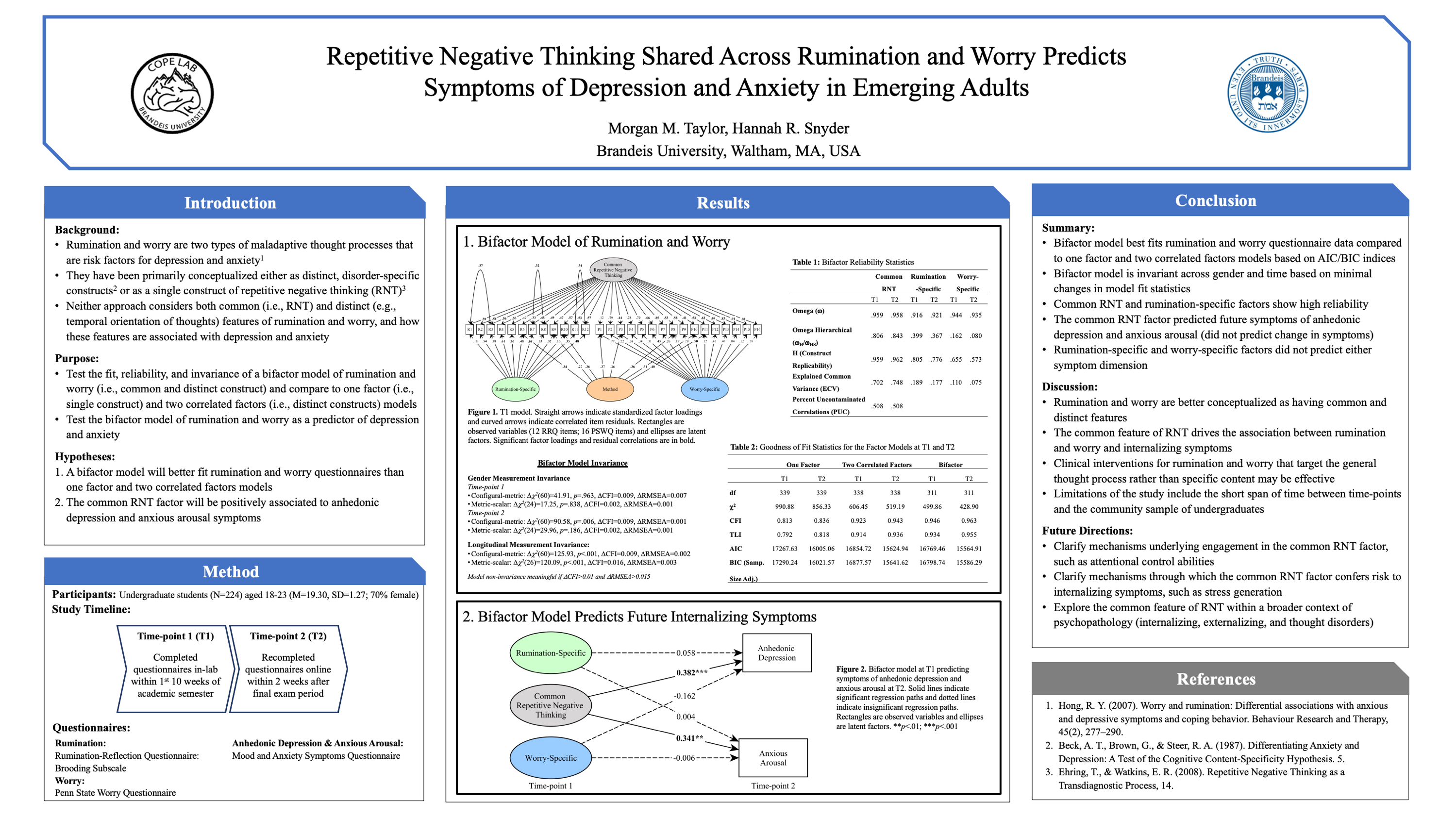Publications
To view Dr. Hannah Snyder's publications, please refer to her Google Scholar and ResearchGate profiles.Conference Posters

Examining Relations between Attentional Control, Repetitive Negative Thinking, Stress, & Affect: An Ecological Momentary Assessment Study
Photo Credit: Marsh, E. M. & Snyder, H. (2024, October). Examining Relations between Attentional Control, Repetitive Negative Thinking, Stress, & Affect: An Ecological Momentary Assessment Study. Poster presented at the annual meeting of the Society for Research in Psychopathology, Montreal, QC.

Dependent Stress Frequency, But Not Perceived Stress Controllability, and Subsequent Repetitive Negative Thinking (RNT) Translate Poor Cognitive Control to Depression
Photo Credit: Nguyen, Q. & Snyder, H. (2023, September). Dependent Stress Frequency, But Not Perceived Stress Controllability, and Subsequent Repetitive Negative Thinking (RNT) Translate Poor Cognitive Control to Depression. Poster presented at the annual meeting of the Society for Research in Psychopathology, St. Louis, MO.

Repetitive Negative Thinking Shared Across Rumination and Worry Predicts Symptoms of Depression and Anxiety in Emerging Adults
Photo Credit: Taylor, M. M. & Snyder, H. R. (2020). Repetitive Negative Thinking Shared Across Rumination and Worry Predicts Symptoms of Depression and Anxiety. Poster presented at the Virtual Convention of the Association for Psychological Science (Virtual, May).

Does Social Support Have an Impact on the Relation Between Stress and Depression in Treatment-Seeking Students?
Photo Credit: Wicks, J.J., Von Steiger, J., & Snyder, H.R. (2019, May). Does Social Support Have an Impact on the Relation Between Stress and Depression in Treatment-Seeking Students? Poster presented at Annual Convention of the Association for Psychological Science, Washington, D.C.

